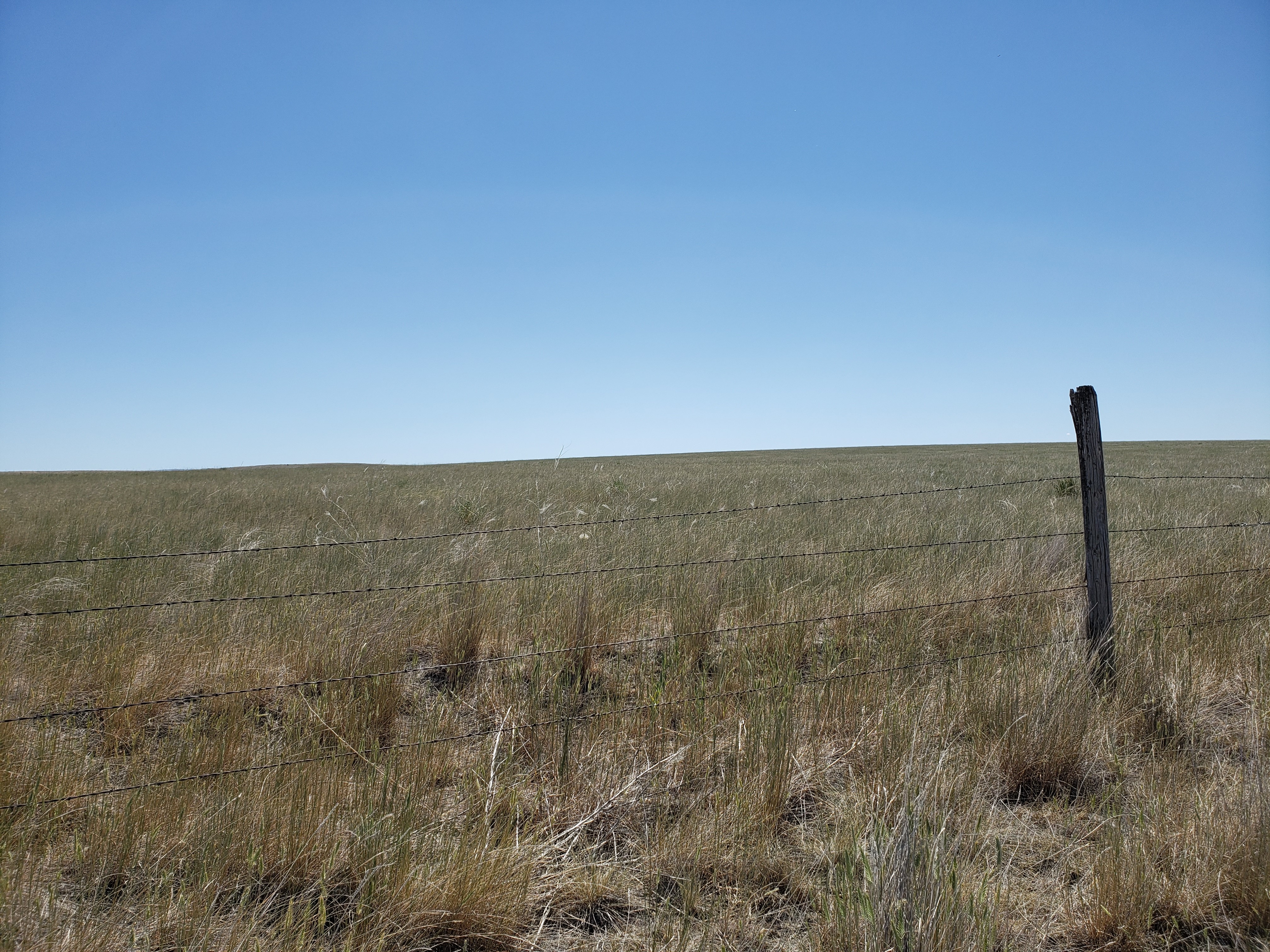Spraying Noxious Weeds during Drought
Introduction

Photo by Jane Mangold, MSU.
Drought is a deficiency of precipitation over an extended period, usually a season or more, and is often linked with high temperatures and low relative humidity. Managing noxious weeds with herbicides during drought is challenging. To kill a weed, most herbicides must be absorbed by the weed, moved throughout the weed (translocated), and reach the location in plant cells where they can disrupt the weed’s growth. This process can be compromised during drought, as drought affects plant growth and effectiveness of herbicide application.
Drought Effects on Plant Growth
When plants photosynthesize, they take in carbon dioxide and water and convert them to sugar and oxygen. During this process, gases (CO2 and O2) are exchanged through stomates, or small openings on the underside of leaves. Water vapor is lost through stomates during this process. Plants conserve water during drought by closing their stomates, and photosynthesis slows. Plants also increase the thickness of cuticles, a waxy, protective film on the surface of leaves and young shoots. Leaves may roll and droop during drought as well. These physiological plant responses lessen herbicide effectiveness: many herbicides need actively photosynthesizing plants for good absorption, translocation, and movement to target cells; thick cuticles can prevent herbicides from making good contact with leaves; and droopy leaves with rolled edges make it more difficult for spray droplets to stay on the leaf surface.
Drought Effects on Herbicide Application
Environmental conditions often associated with drought—high temperatures and low relative humidity—can reduce effectiveness of herbicide applications. High temperatures and low relative humidity lead to rapid drying and evaporation of spray droplets, reducing contact time with plant foliage and absorption of herbicide into plant tissue. The risk of volatilization and movement of herbicides off-site increases with high temperatures too. For soil-applied herbicides that are broken down by microbes in the soil, high temperatures can increase microbial activity and lead to faster decomposition, although dry soil conditions may counteract this. Soil-applied herbicides may remain on the soil surface, risking photo decomposition or off-site movement during high winds.
Tips for Noxious Weed Management during Drought
Consider the following strategies for improving herbicide performance, and noxious weed management in general, during droughty conditions:
- If drought is looming, be prepared to spray noxious weeds earlier in the season or wait until fall when cooler, and hopefully wetter, weather occurs
- Apply herbicides early morning or evening when temperature is lower and relative humidity is higher
- Use quality adjuvants (e.g., surfactants, stickers, spreaders) to improve contact between plant foliage and herbicide solution
- Increase the volume of water (spray volume or GPA (gallons per acre)) applied with the herbicide
- Consider alternative control tactics like mowing or targeted grazing
- Supplemental hay may be needed for feeding livestock during drought; if hay is received from distant locations, feed it in a contained area and monitor for new invaders for at least a year or two.
Further Information
For more information about this month's weed post, contact Extension Invasive Plant Specialist Jane Mangold. Past posts are available in the Monthly Weed Post Directory.
This weed post is also available as a printable PDF (630KB).
